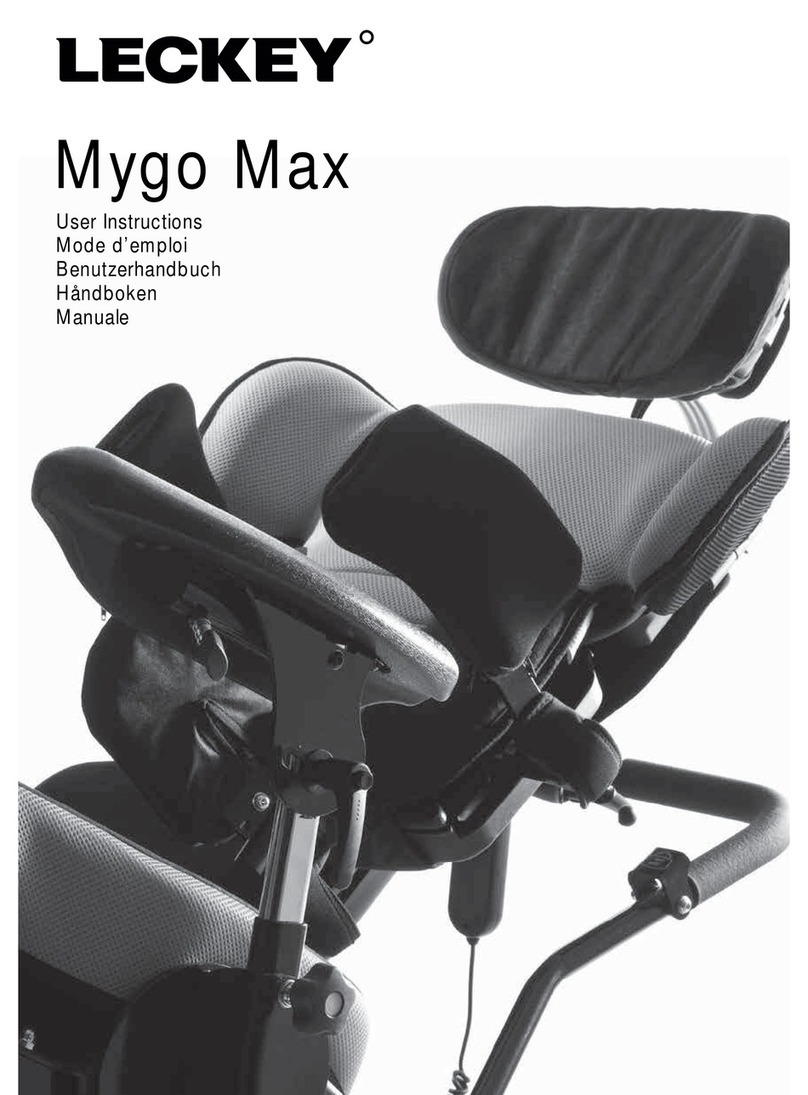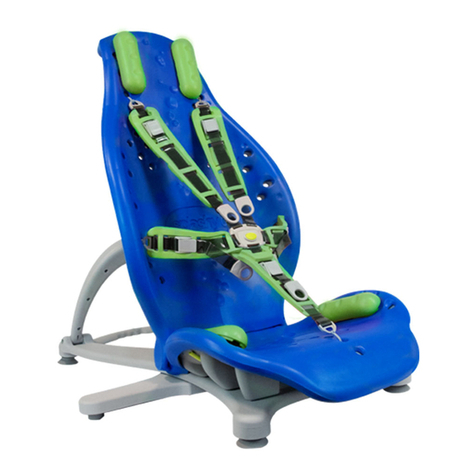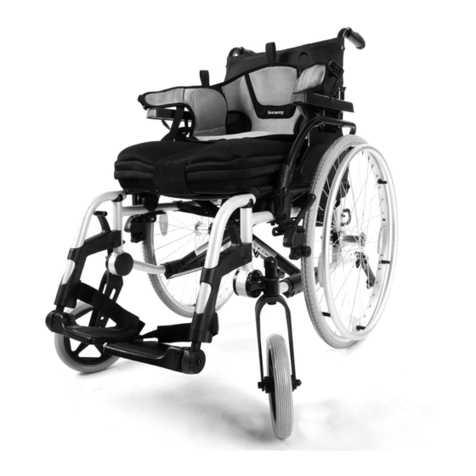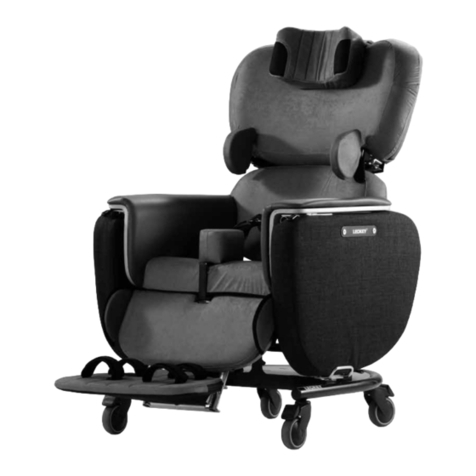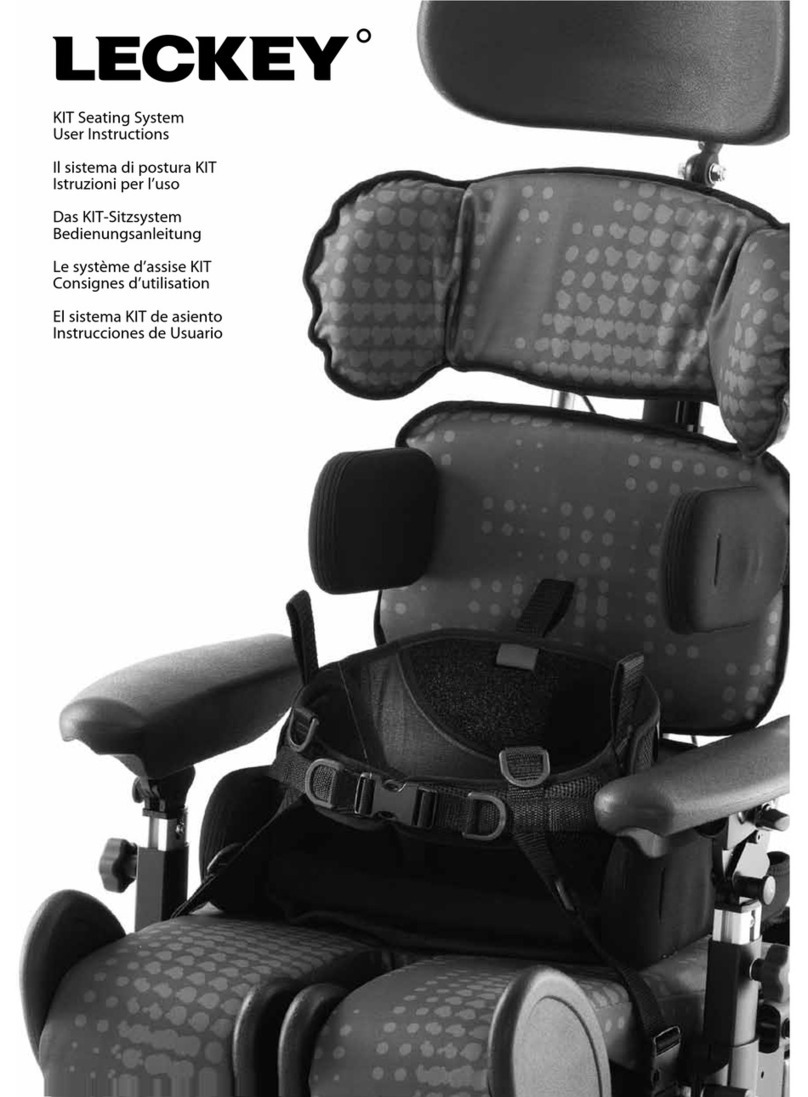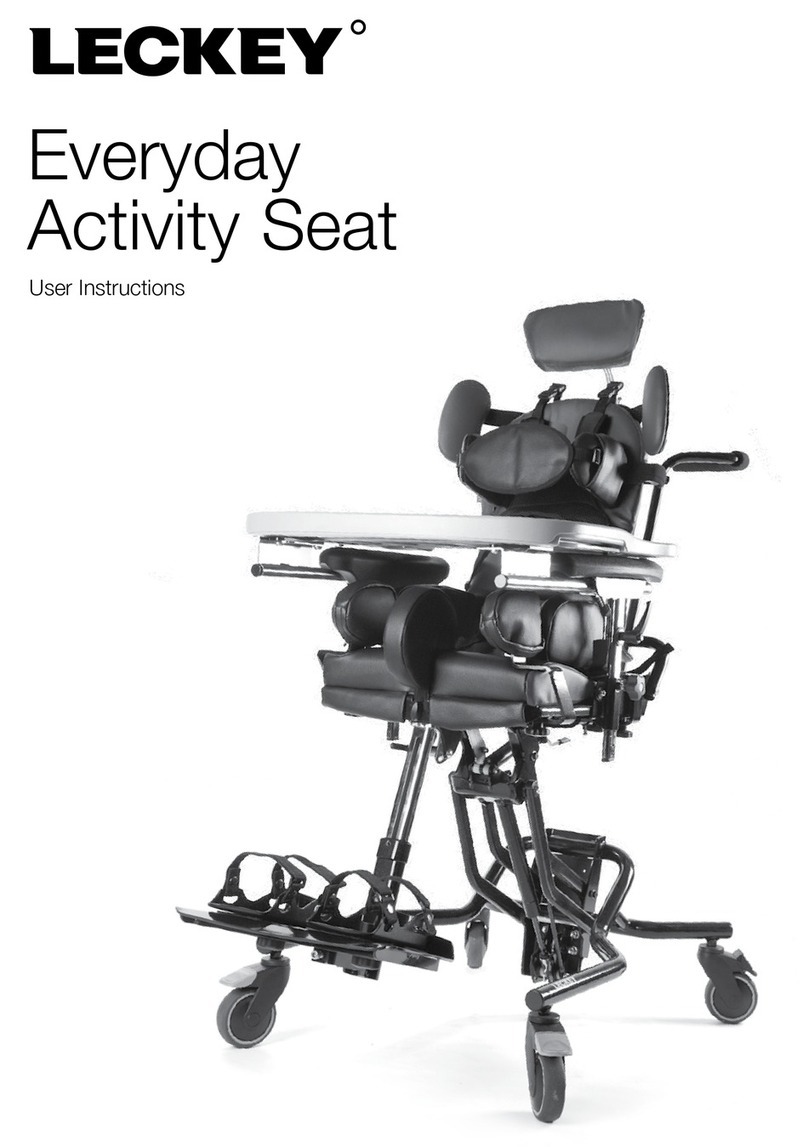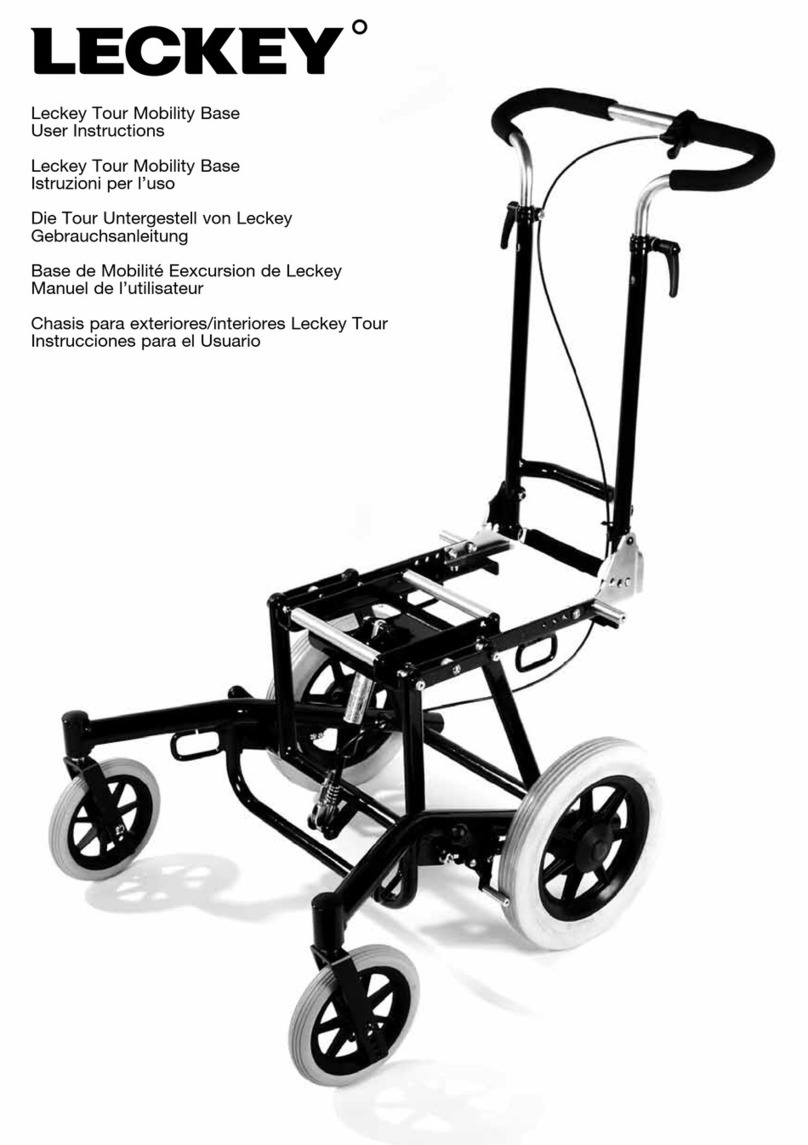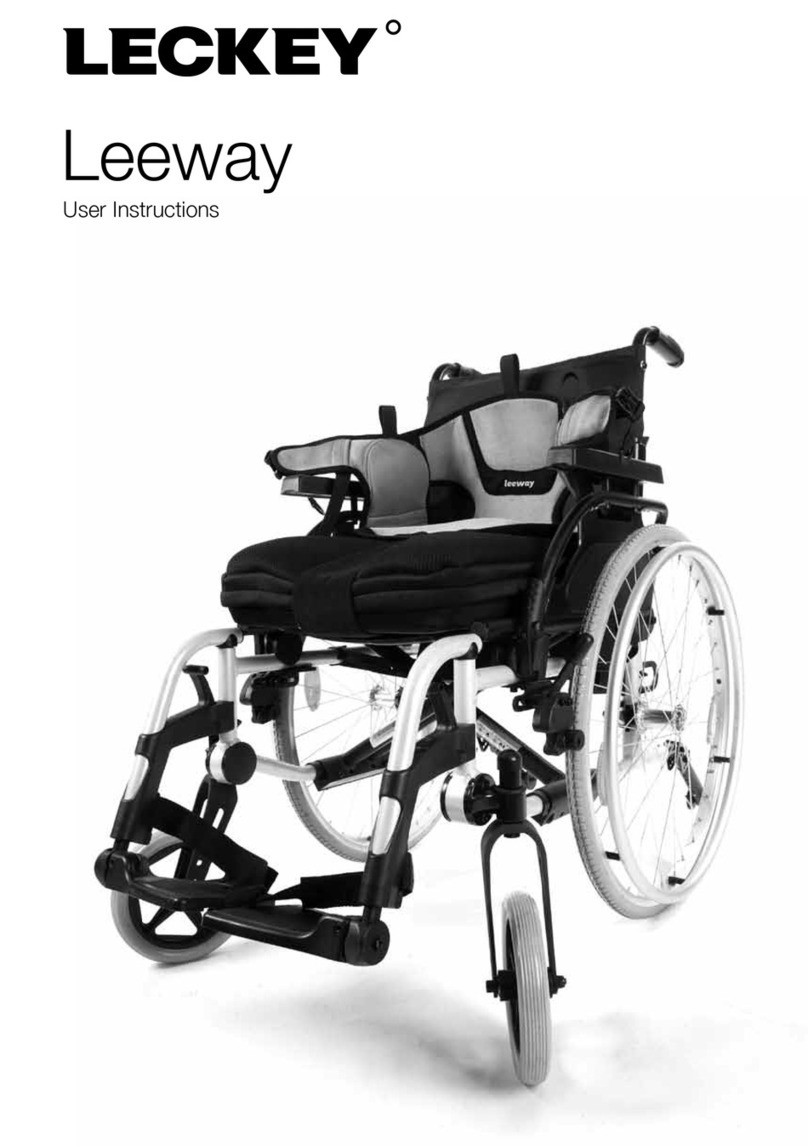1. Intended Use
The KIT Seating System is a seat that
has been designed for use by adults
and teenagers (from 12 years old) with
disabilities, in the home, in day centres,
in schools and outdoors, if used on a
mobility base. The seating system has a
maximum user weight of 75kg (165lbs).
The seating system is modular and
can be used with a choice of indoor or
outdoor chassis. The Hi-low chassis
has been designed for indoor use but
can also be used outdoors on an even
surface. The Hi-low chassis should never
be exposed to the elements as this may
corrode the metal components.
The Kit seat unit will interface with a
range of mobility bases, the details of
which can be found on our website,
www.leckey.com.
2. Declaration of Conformity
James Leckey Design Ltd as
manufacturer with sole responsibility
declares that the Kit Seating System
conforms to the requirements of the
93/42/EEC Guidelines, Medical Device
Regulations 2002 and EN 12182
Technical aids for disabled persons and
test methods.
3. Terms of Warranty
The warranty applies only when the
product is used according to the
specified conditions and for the intended
purposes, following all manufacturers’
recommendations (also see general
terms of sales, delivery and payment).
A three year warranty is provided on
all Leckey manufactured products and
components.
6.1 Always read instructions fully before
use.
6.2 Users should not be left unattended at
any time while using Leckey equipment.
6.3 Only use Leckey approved components
with your product. Never modify the
product in any way. Failure to follow
instructions may put the user or carer
at risk and will invalidate the warranty on
the product.
6.4 If in any doubt to the continued safe
use of your product or if any parts should
fail, please cease using the product and
contact our customer care team or local
dealer as soon as possible.
6.5 Carry out all positional adjustments
and ensure that they are securely fastened
before you put the user into this product.
Some adjustments may require the use of
a tool which is provided with each product.
Keep all tools out of reach of children.
6.6 When placing the user into a seating
system, for safety and positional reasons,
always secure the Pelvic Cradle first.
6.7 When the product is stationary ensure
that all wheels are locked and facing away
from the base as this will improve product
stability. This is especially important
when the tilt-in-space or back recline
facility is in use.
6.8 When the seat is in use on the Hi-low
chassis we do not recommend that the
users are moved over uneven surfaces
when in the equipment. All due care
and attention should be taken when
transporting the user in and out of the seat.
6.9 Never leave the product on a sloping
surface, greater than 5 degrees. Always
remember to lock all the wheels.
6.10 Only use the push handles to steer
and move the seat from one area to
another. Never use the tray for this
purpose.
6.11 The product contains components
which could present a choking hazard to
small children. Always check that locking
knobs and bolts within the user’s reach are
tightened and secure at all times.
6.12 Leckey products comply with fire
safety regulations in accordance with
EN12182. However the product contains
plastic components and therefore should
be kept away from all direct sources of
heat including naked flames, cigarettes,
electric and gas heaters.
6.13 Do not place hot items greater than
40º centigrade on the tray.
6.14 Clean the product regularly. Do
not use abrasive cleaners. Carry out
maintenance checks on a regular basis to
ensure your product is in good working
condition.
4. Product History Record
Your Leckey product is classified as
a Class 1 Medical Device and as such
should only be prescribed, set up or
reissued by a technically competent
person who has been trained in the use
of this product. Leckey recommend that
a written record is maintained to provide
details of all set ups, reissue inspections
and annual inspections of this product.
5. Product Training Record
(Parents, Teachers & Carers)
Your Leckey product is classified as
a Class 1 Medical Device and as such
Leckey recommend that parents,
teachers and carers using the equipment
should be made aware of the following
sections of this user manual by a
technically competent person:
Section 6
Safety Information
Section 8
Clinical Set up for Postural Management
Section 9
Cleaning and Care
Section 10
Daily Product Inspection
Leckey recommend that a written record
is maintained of all those who have
trained in the correct use of this product.
6 Safety Information

